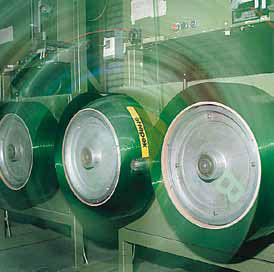A Quick Guide to Plastic and Steel Strapping

Strapping (also frequently termed as bundling or banding) is the process of applying straps to items so as to combine, retain, reinforce, or protect them. The strap itself is also frequently defined as strapping. Strapping is typically used in the product packaging market. The strap bands are made of a flat, flexible substance that is usually based on steel or plastic, with the latter being composed of either polypropylene, nylon or polyester, or a blend of these plastic materials).
The Many Uses of Steel Strapping
Steel is considered to be the strongest, most reliable, and least pliant strapping material. It is sold in a number of diverse sizes, densities, and qualities. Standard surface topcoats for steel strap bands like wax are applied to help stabilise the pressure that surrounds the bundled material. This kind of strapping is useful for heavy-load bundling, when its advantages of maximum toughness and marginal elasticity are most needed. Examples of these high-performance uses are: Hauling and locking down building goods, heavy blocks, nuclear weaponry, rocks, and architectural metal such as coils and cables.
The Many Uses of Polypropylene Strapping
Polypropylene strapping is the most reasonably priced solution for medium to light-duty binding, centralising, and palletising tasks. Some jobs it is well-adapted for are: Binding newspapers, thin books, food, home appliances, wrapping machines, pre-cut boxes, and paper. It may be bought in many different sizes, thicknesses, plastic blends, and with or without strapping accessories, and is very often stamped or imprinted.
Polypropylene strapping can stretch further than most other types of strapping without breaking, but can develop an unrepairable dead stretch if subjected to constant pressure. Polypropylene strapping will lose nearly 50% of its rigidity after 60 minutes, a process that is made quicker by increases in temperature. As a result, while it is appropriate for certain packages that are more resistant to slack, slackness can still appear in the strapping over a period of time when it is being used to bundle heavy materials like stones, bricks, and cement.
Furthermore, polypropylene straps are susceptible to UV damage and will hastily decompose when left outside, where they cannot escape the wraith of the natural elements. This is why dark-coloured polypropylene strapping is preferred for outside use, since there is less risk of UV destruction.
The Many Uses of Nylon Strapping
Nylon strapping has the greatest strength of the three types of plastic, but its employment for different purposes is somewhat uncommon due to its high price tag. Many years ago nylon strapping was in vogue, but these days the other more cost-efficient plastics are more popular. One specific industry that still utilises nylon strapping is the refrigeration market, since it is less prone to slippage than polyester and polypropylene strapping when exposed to low temperatures.
The Many Uses of Polyester Strapping
Polyester strapping is the second strongest polymer strapping material behind nylon, and it is quite popular as a functional replacement for steel strapping in several different markets. This kind of strapping provides continuous tension on unwieldy lots and in hot and/or humid climates.
Its well-above-average stretching abilities make it possible for loads to minimise impact traumas without the breakage of any straps. For this reason, polyester strapping is best for performing moderate to heavy-load binding tasks, which includes materials like heavy bricks, pipes, wood, cans, bottles, and folded boxes.
Today, buyers can also obtain individualised polyester strapping from Signodesealstrap.ie, which is suitable for use in extremely challenging bundling applications. To give an example, in chilly conditions a polyester strap that’s been sealed off with a very hot glue may be applied due to its weather-proofing abilities.
Article By Lauren Williamson








